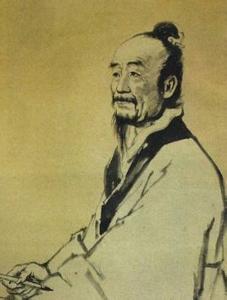Liu Hui was a Chinese mathematician who lived in the 200s in the Wei Kingdom.
刘徽,数学家,公元200年魏晋年间人。
In 263 he published a book with solutions to mathematical problems presented in the famous Chinese book of mathematics known as Jiuzhang Suanshu or The Nine Chapters on the Mathematical Art.
公元263年,他出版了一本解决数学难题的专著——注释《九章算术》。
In these commentaries he presented(among other things ):
在这此注释里,刘徽主要提出了:
An estimate of π in the comments to chapter 1. He estimated pi to 3. 141014 with a 192 sided polygon and later calculated pi as 3. 14159 by using a 3 079 sided polygon.
圆周率(第一章)刘徽算到192边形的面积,得到π=3.141014,又算到3 079边形的面积,得到π=3.14159。

He suggested that 3. 14 was a good approximation.
他认为3. 14是个比较好的近似值。
His estimation is made with a method similar to Archimedes.
刘徽的计算方法与阿基米德的计算方法相似。
The Nine Chapters used the value 3 as π, but Zhang Heng had previously estimated it to the square root of 10;
《九章算术》里的π值为3,但是张衡原来已经算出π是10的平方根;
Gaussian elimination;
高斯消元;
Cavalieri's principle to find the volume of a cylinder.
“牟合方盖”说。
He also presented, in a separate appendix called Haidao suanjing or The Sea Island Mathematical Manual, several problems related to surveying.
在《海岛算经》中,刘徽还提出了测高测远方法以及多次测望的方法。
Liu was one of the first mathematicians known to leave roots unevaluated, giving more exact results instead of approximations.
刘徽是最先不求解,不给近似值而给出精确值的数学家之一。












